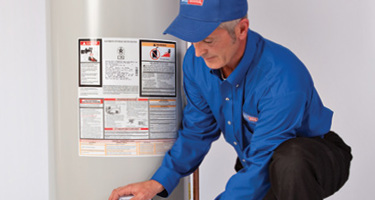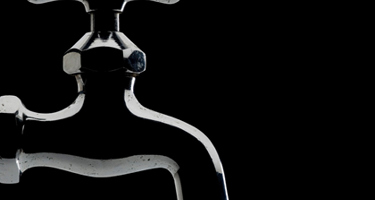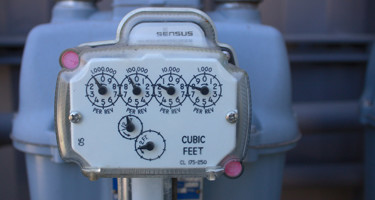
Designing a new bathroom or looking to renovate the old one? Don't overlook the importance of choosing a new toilet!
While it's not as luxurious as a massaging shower or as glamorous as a mosaic backsplash, the right combination of style, comfort, convenience, and sustainability in a toilet can make it the star of your bath.
But how does one decide what is the best toilet for their bathroom? Does it come down to the toilet seat? What the toilet bowl shape is? How many gallons per flush does the toilet go through? How about the chair height of the actual seat?
Choosing a toilet doesn't have to be complicated. Here are just a few questions to consider as you shop for your next throne:
What Are The Different Types of Toilets Available On The Market Today?
There are five main types of toilets. They range from the standard gravity toilet to a more high-tech model that is equipped with an automatic flush and other luxury features. Here's how they differ:
Gravity Toilets
Gravity toilets use water pressure created by filling the tank on top of the bowl, causing it to empty through pipes into your sewer. It was invented in 1596 by Sir John Harington (1561 – 1612). These were also once known as "Johns" or "Jack". Each time you push down this type of handle, water flows out of your cistern and opens up a trapdoor inside your WC pan which releases all waste down into your sewer pipe.
There are two types of gravity toilets, the standard and high-efficiency model.
Standard models use about five liters (or one gallon) per flush while high-efficiency variants only require around three to four liters (0.79 – 0.96 gallons). Over time this can make a big difference in how much water you're using every day even if it doesn't seem like that much now!
Another important feature is how long these types of toilet pans actually take to refill after they have been flushed, allowing toilet paper and waste once again into your home's drain system without clogging up the pipes.
The longer the better because then there will be less chance for bacteria or mold growth down below due to stagnant water sitting inside your WC pan too long.
Floating Ball Toilets
The floating ball is a type of gravity toilet that uses two tanks, one for the bowl and another which holds water called 'flushing tank' or cistern. Inside this flushing tank sits what is known as a "ball cock". This device contains either air or water with an overflow tube leading back into your sewer system's mainline in order to prevent too much pressure from building up inside your WC pan when it fills back up again after being flushed by you pushing down on the handle located at the top of its lid.
The more modern high-tech models are activated by how hard you push down on its handle rather than how long thanks to clever new technology allowing them to be powered by small batteries which are built into its lid.
The best models also feature overflow protection so they can be used with low flush systems since if anything goes wrong then excess pressure won't cause them to leak over time due to faulty valves etcetera resulting in water damage.
High-Tech Gravity Toilets
These high-tech toilets come with a range of impressive features such as an automatic flush, slow close lids and seats so you don't have to touch anything dirty when replacing its lid or seat after use, LED night lights which turn on automatically when the room is dark thanks to the built-in light sensor located inside each unit's rooftop tank (some also include motion-activated sensors).
Some even give off different colors using LED lighting for those who like that kind of thing! They can be used just like any other type of gravity-based toilet but they work best alongside eco-friendly low flow models since these types take fifteen percent less water per flush than normal ones while still performing to the same high standards.
Angled and Back-To-Wall Toilets
Angled toilets are best used in spaces that aren't as wide to allow them to fit comfortably where other standard models might not, such as small cloakrooms or en suites for example. As their name suggests they sit at a slight angle (about thirty degrees) so that any waste flows directly into your sewer line without even touching its sides first.
This is how bathrooms with short entrance halls can be easily fitted with one of these classic WCs without having too much distance to cover before reaching your main drain pipe – making it easy for wastewater etcetera to flow away quickly and efficiently instead of getting trapped inside due to insufficient space between the pan and wall.
Back-to-wall toilets on the other hand are best used within larger bathrooms where space isn't an issue. This is how they get their name; instead of having a short entrance hall, these have the plumbing in the wall behind the unit.
You follow it all the way to its floor level before curving upwards at the end which means that wastewater will also flow away quickly without getting trapped inside due to insufficient distance between pan and wall – making them ideal for any homeowner who wants one installed in his or her large family bathroom!
These wall-mounted options can be fitted with either doors or half-height partitions since unlike standard WCs there's no need for full-height walls if you don't wish to have any ions slowing down how easy it is to get in and out of your bathroom.
High-Efficiency Toilets
Sometimes one of the least talked about features of a toilet is the flush valve size. Dual-flush toilets are newer options without sacrificing water efficiency. These water-efficient models provide two different amounts for gallons of water per flush choices (1.6 gallons per flush and 1.28 gallons per flush). 1.6 gallons of water is standard, while the lesser amount can be used to reduce water waste.
An example of one is are low flow toilets, designed specifically so they use roughly fifteen percent less water per flush compared with standard gravity-based models.
This is how they can be used with high-efficiency toilets as well as eco-friendly low flush systems without causing any problems such as excess pressure etcetera since the water levels inside their rooftop tanks will still remain suitable for flushing away waste smoothly and efficiently.
How Do I Know Which Toilet is Right For Me and My Family?
Each toilet is unique with different features. The best way to find the right one for you is your own preferences, how much space you have, and how often it will be used.
Toilets come at a variety of prices but a higher price doesn't always mean better quality. There are plenty of affordable toilets that work well in homes where they're installed regularly. Decide how much water or electricity-saving options like low-flow or dual flush appeals to you (or if such things even matter). Also, take into account what kind of installation process might be required - some can involve more complicated connections than others.
And since we're talking about something people use every day in their home, sure it feels comfortable too. Don’t be afraid to sit down and test drive one. You’ll be using it multiple times a day!
In the end, just choose a toilet that makes sense for you. If there's more than one in your household then ask yourself how often each person will use it (one may be better suited for older or younger people).
What Should I Keep in Mind When Buying The Best Toilet?
Remember how the toilet flushed? You want to get one with a flushing performance that matches how you use your toilet. The flushing power is usually measured in gallons per minute (GPM). A good rule of thumb for choosing a GPM, take one and divide it by two. So if your household uses five liters or better know how many toilets are used at once during a flush.
Do not be fooled into thinking bigger is always best. If you have low water pressure from an old home with aging pipes, then having too high of a GPM will make it worse instead of making matters any easier.
Size things up
If you're replacing an existing old toilet but like the shape and size, remember to replace it with something as similar as possible. For example, think about the shape of the toilet seat. If your existing toilet has an elongated bowl then shop for a new elongated toilet with elongated bowls. If not, make sure you're looking at round bowls instead.
Don't forget to consider height; toilets typically come in a few different sizes. Keep a comfort height you're already accustomed to, as 15 inches is the standard height usually. Taller new toilets have options that range as high as 19 inches tall.
Rough-in measurements
Also keep in mind how much space you have between under the rim and the flooring level where the bowl sits on top before buying any taller toilets.
A smaller bathroom with very low bowl placement needs to be measured carefully if you want something taller that looks right within this limited space range. So always check what's available first then figure out how much room there is for any adjustments later on (if needed).
The standard rough-in is 12 inches, though you may encounter 10-inch and 14-inch rough-ins in older homes. You should find the rough-in measurement in the new toilet’s product information. Never buy anything without doing these steps beforehand since it could make things even worse instead of solving problems like you had hoped in the first place.
One-piece or two-piece?
Toilets are most commonly made in one- or two-piece models. Most toilets are two-piece, meaning that the bowl and tank are bolted together. Two-piece toilets are typically less expensive than a one-piece toilet.
One-piece toilets may be easier to clean. If installation parts aren't included, make sure you purchase all the toilet parts you'll need: a toilet seat, closet bolts, a wax ring with a sleeve, and bolt caps.
A bidet is another option to consider, depending on your preferences.
Do not be fooled by price alone
Just because one toilet costs more than another does not mean that they are better at flushing or any other performance aspect! While these things can make up cost differences, don't assume the cheapest option isn't worth your while either. That's why research should be done even when buying second hand toilets sometimes too since money matters but quality still has its place as well (no matter how small).
Porcelain vs. plastic toilets
When choosing between plastic vs porcelain bowls remember that porcelain is more durable and will look better over the long run. Plastic on the other hand can scratch or wear down, so how do you care for it? Check how easy they are to clean too because some materials might be easier than others!
Helpful Tips For Installing a New Toilet
The next step is how to properly measure and attach the new toilet. Toilet installation may be a bit complicated for some people, but it's really not that difficult if you pay attention to detail and follow these easy steps:
First of all, make sure your floor is level. To do this place an adjustable wrench under one side of your toilet and raise or lower it until the floor is level.
Next, you will want to find how far from your wall to place the toilet. Have a friend help, measure from different angles and choose where is best for both of your preferences. Make sure there's at least that same amount in front and behind so when you sit down on it the lid doesn't hit a wall.
Once you have placed two marks with a pencil, use a tape measure between them going straight out so they are perfectly lined up horizontally across each other. You can also draw lines using chalk if needed but make sure not to get anything stuck underneath because no one wants dirty hands touching their new bowl!
Now all you need to do is screw in four screws into the floor, making sure they are level. The two screws closest to your wall should be a centimeter or so away from the wall and the other ones on each side can be as far out as you need them to make it straight. After that simply place back how it was before and all is done!
Now, this is all if you want to do the toilet installation yourself. There are always professional plumbers, like the ones at ARS/Rescue Rooter, that can come and take care of this for you.
Tips For Maintaining Your Newly Installed Toilet
Maintaining your newly installed toilet can be easy and simple. It's important to note that you should never clean your toilet with bleach. It is fine if the bowl starts out somewhat dirty, but it will corrode over time.
Also, try not to use harsh chemicals as they can remove how well a product works and how long it lasts. When in doubt about how often or how much of something you need for cleaning purposes, err on the side of less is more! If there isn't anything visibly stuck inside you're good to go - just run a little bit of water through after using so everything looks nice and fresh.
Don't forget - only flush things down your toilet one time before throwing them away so they don't clog up overnight. If something does get stuck in the bowl just use a plunger first because sometimes all it takes is getting air pressure behind it again!
Another big thing when going from old toilets to new ones: don't flush paper towels down them! They'll clog up almost immediately no matter what kind of toilet you have.
The best way to keep your toilet clean is by keeping it maintained, and how much you need to maintain depends on how much you're using it! While this may seem like common sense if there are any specific questions about how often or what kind of materials should be used for maintenance purposes feel free to contact us.
Now It’s Time to Enjoy Your New Throne
The toilet manufacturing industry has created an array of luxury features that can add to your experience. Once you know what is best suited for your family, your home, and your budget, picking and installing your new toilet can be simple.
Trust ARS/Rescue Rooter for all of your toilet repair and toilet installation service needs. From overflowing toilets to replacing old ones, and even unclogging serious backups, our experienced plumbers across the nation have the skills and the expertise to take care of your home’s toilets.
Find your nearest location to you or book an appointment online now to get started!
***This post was originally written in November 2017, and updated in November 2021.






